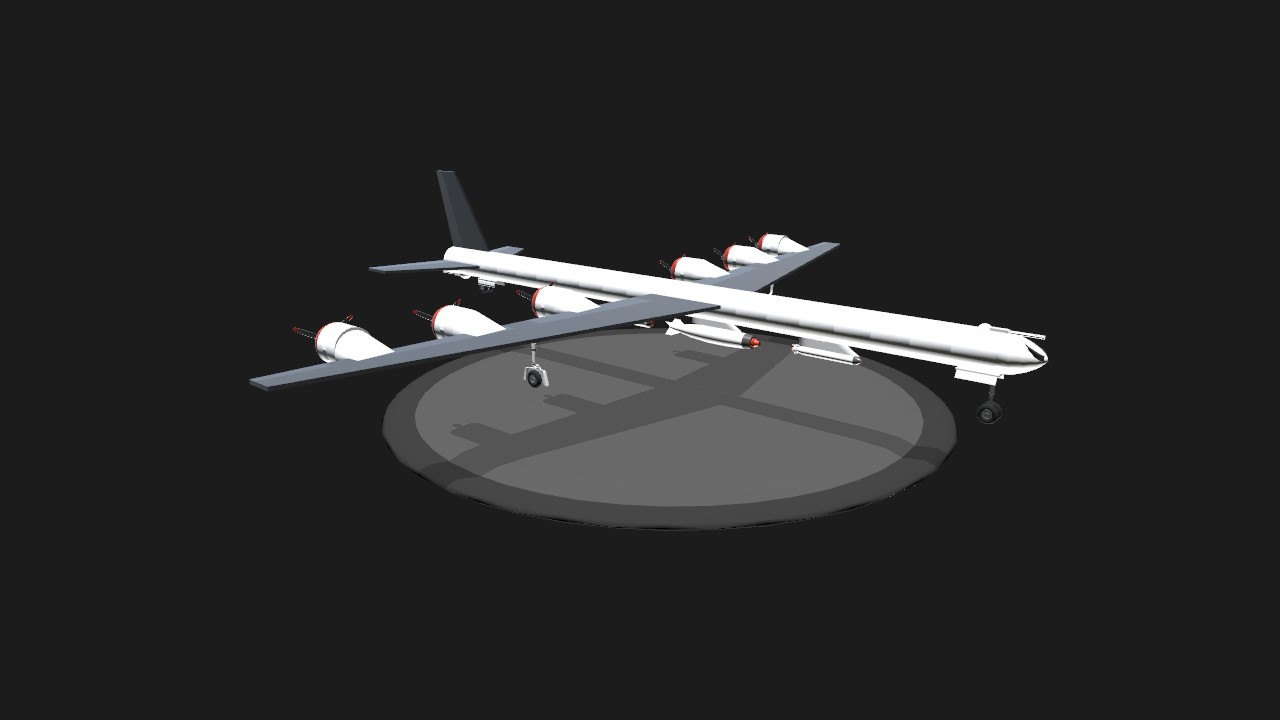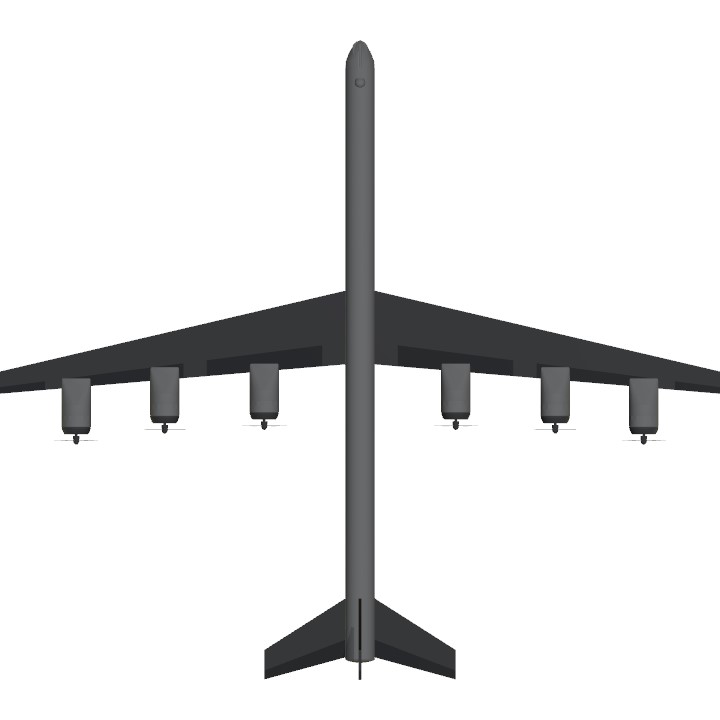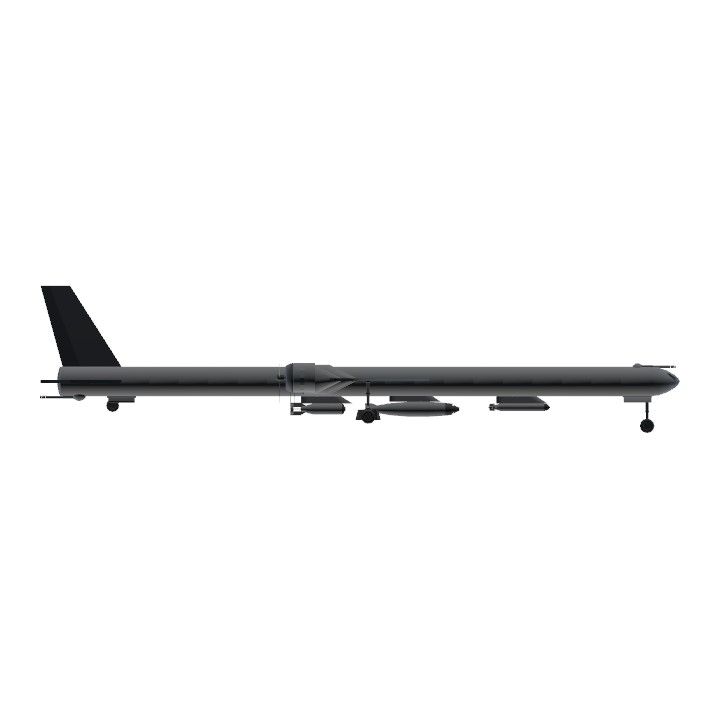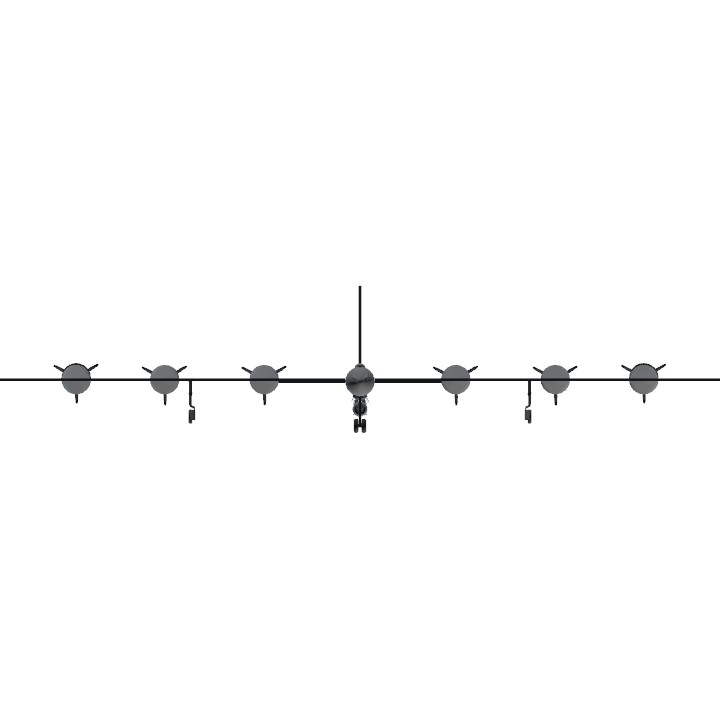Auto Credit Based on PZLAgencies's Simple XB-36 nose
In 1941, the fall of Britain to a German invasion seemed imminent. If the United States joined the war against the Axis Powers, the fall of Britain would leave no bases in Europe from which the United States Army Air Corps (AAC) could bomb Germany. This possibility led to AAC to seek a bomber of truly intercontinental range. On 1941 April 11, the AAC issued a design competition for an aircraft with a 275 mph (445 km/h) cruising speed, a service ceiling of 45,000 ft (14,000 m), capable of delivering 10,000 lb (4,500 kg) of bombs to targets 5,000 miles (8,000 km) away. At the time, these requirements far exceeded the best technology available.
In November 1941, the United States Army Air Forces signed a contract for two experimental aircraft under the designation XB-36, based on design studies previously submitted by Consolidated Aircraft Corporation. A few days later, the Engineering Division at Wright Field decided that Consolidated's six-engine design, with all engines on the trailing edge of the wing, was the best option for the aircraft. The original design used vertical stabilizers and rudders, similar to those used in the B-24 Liberator. By the time the first XB-36 was delivered, the design had been changed to a huge single tail, and the wingspan increased to 230 ft (70 m), an unprecedented size.
It was clear that the B-36 needed nose guns. Adding these required a substantial rearrangement of the cockpit. In late 1944, a mockup of the new nose was approved. Though too late for the first prototype, it would be fitted to the second XB-36. Unfortunately, the new nose with its radar and radio equipment added significant weight.
The first (and only) XB-36 was completed at the Consolidated Fort Worth factory in late 1945. The plane sat on huge wheels 9 ft (2.8 m) in diameter; only three airfields in the USA had concrete thick enough to support the pressure exerted by wheels of that size. In 1948 June, the single-wheel undercarriage was replaced by a new undercarriage consisting of two wheels with half the diameter on each strut. This design, which would become the production standard, enabled the B-36 to operate on runways of reasonable thickness.
The maiden flight revealed problems with the flap actuating system, engine cooling, and the reliability of the aluminum wiring. Propeller vibration adversely affected the wing structure. Worse yet, the XB-36 failed to meet the 1941 specifications. In particular, inadequate engine cooling kept its service ceiling under 30,000 ft (9,000 m), much less than that called for in the original contract.
Following a grounding for modifications, the XB-36 was flight tested for 160 hours by pilots of the Army Air Force Air Materiel Command, then returned to Convair for further testing.
Controls:
normal.
weapons:
3 bombs, 1 front turret, 1 rear turret (may not be real).
WARNING!!!!!
Aircraft not 1:1 scale. This is my first replica so there are lots of parts inaccurate.
issues:
Aircraft will go out of control if you pull too far on the stick.
Other versions:
Otherwise,
PLEASE ENJOY!
Specifications
General Characteristics
- Predecessor Simple XB-36 nose
- Created On iOS
- Wingspan 80.1ft (24.4m)
- Length 71.2ft (21.7m)
- Height 16.3ft (5.0m)
- Empty Weight 14,299lbs (6,486kg)
- Loaded Weight 19,035lbs (8,634kg)
Performance
- Horse Power/Weight Ratio 0.472
- Wing Loading 35.0lbs/ft2 (170.8kg/m2)
- Wing Area 544.2ft2 (50.6m2)
- Drag Points 5670
Parts
- Number of Parts 60
- Control Surfaces 15
- Performance Cost 585




